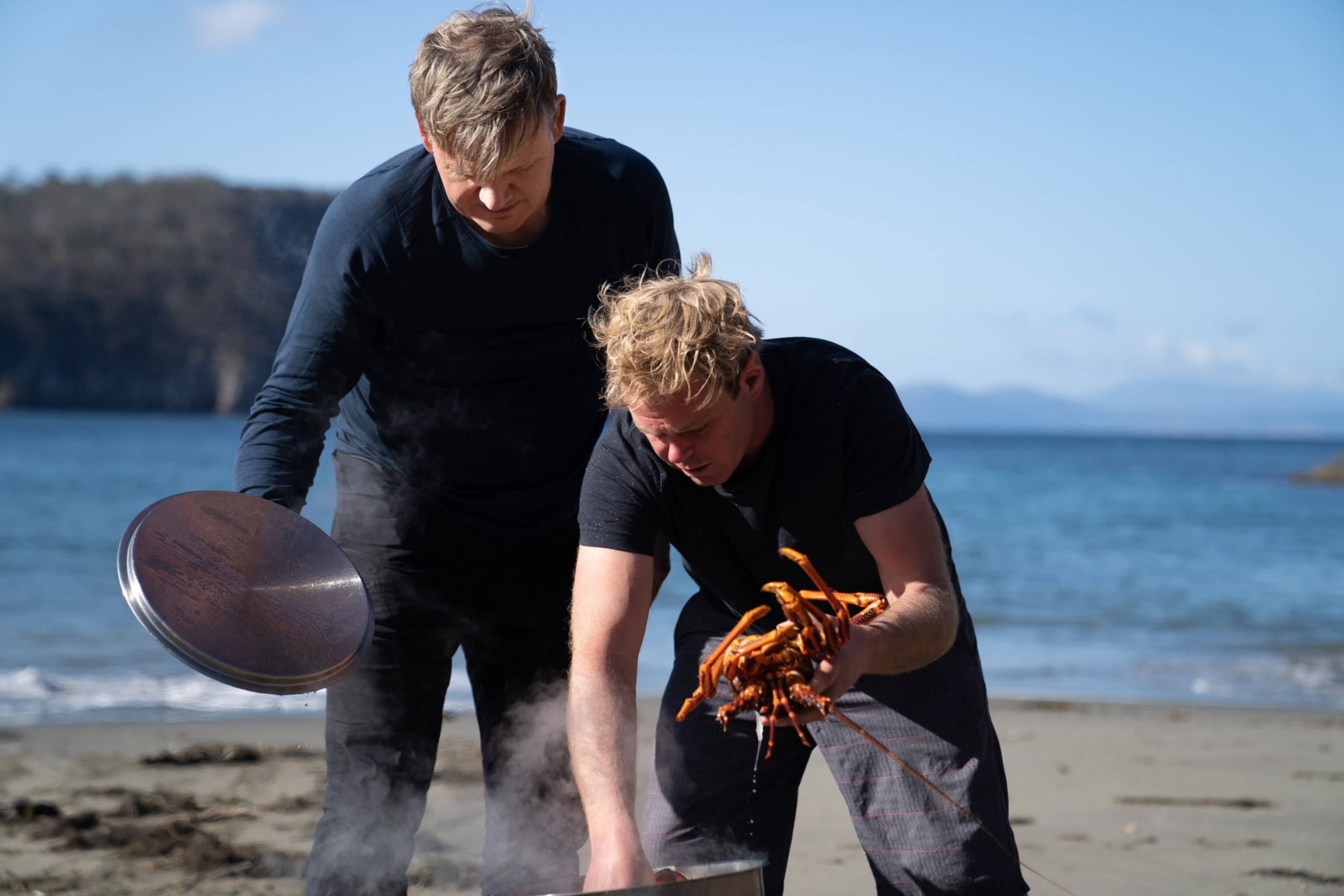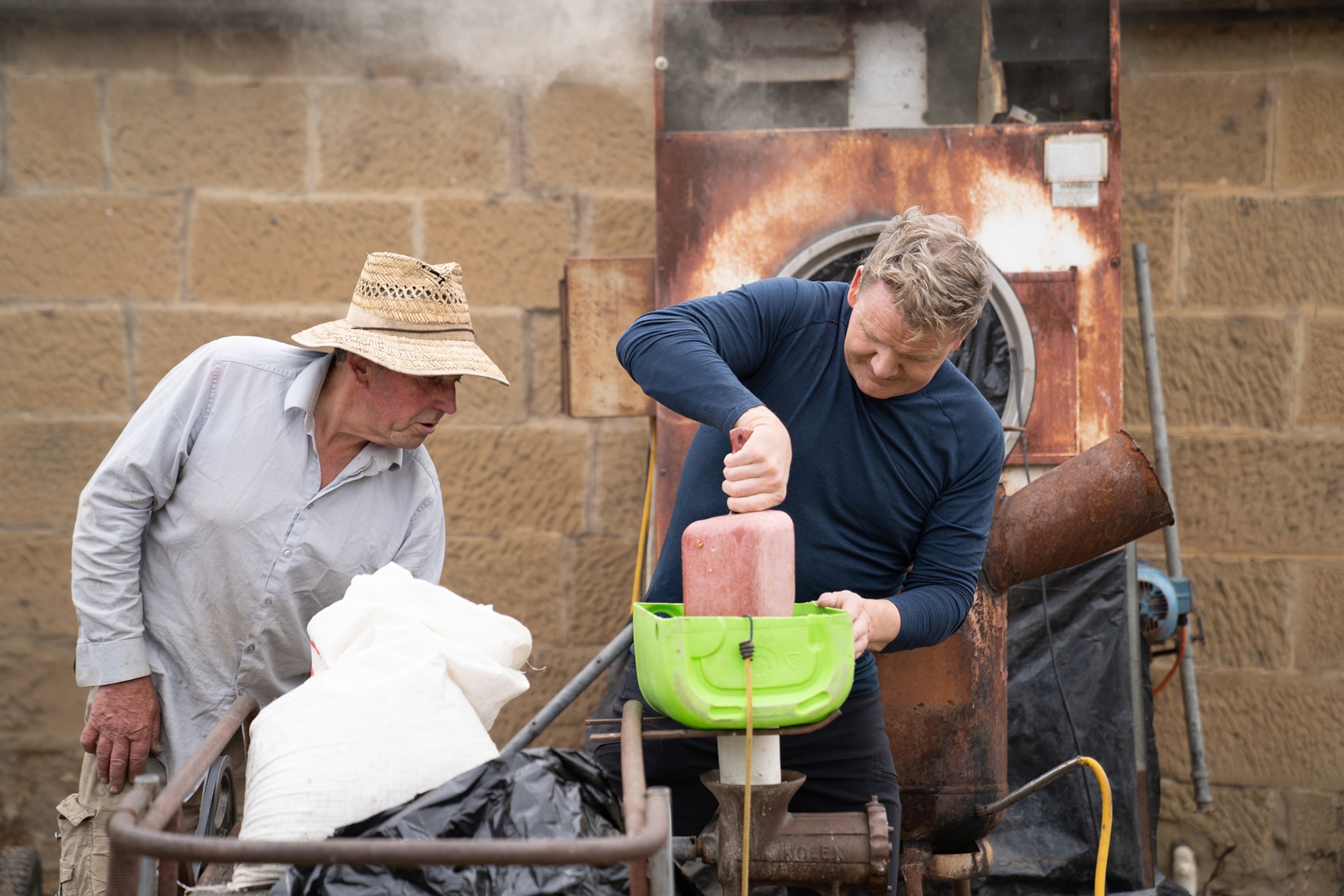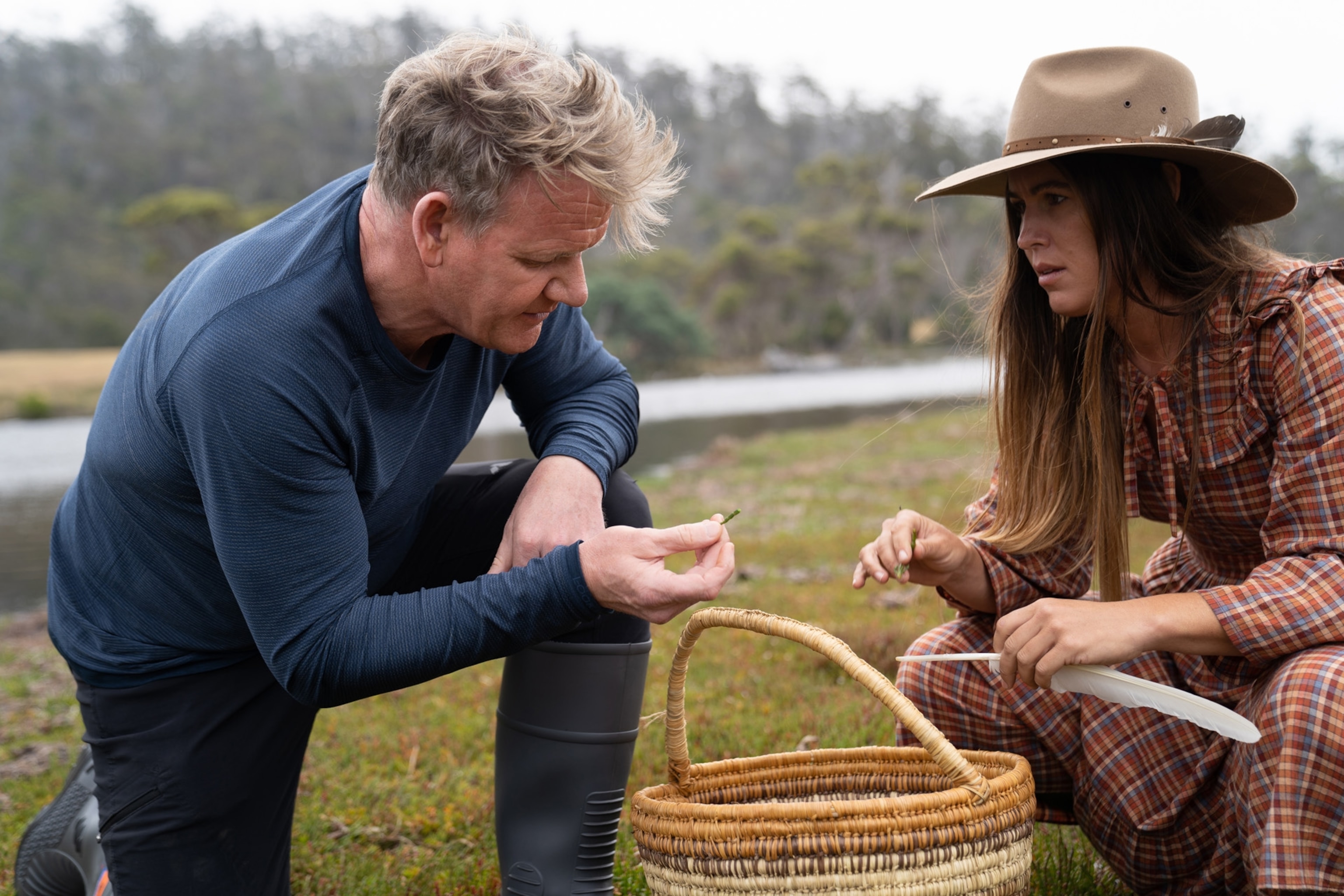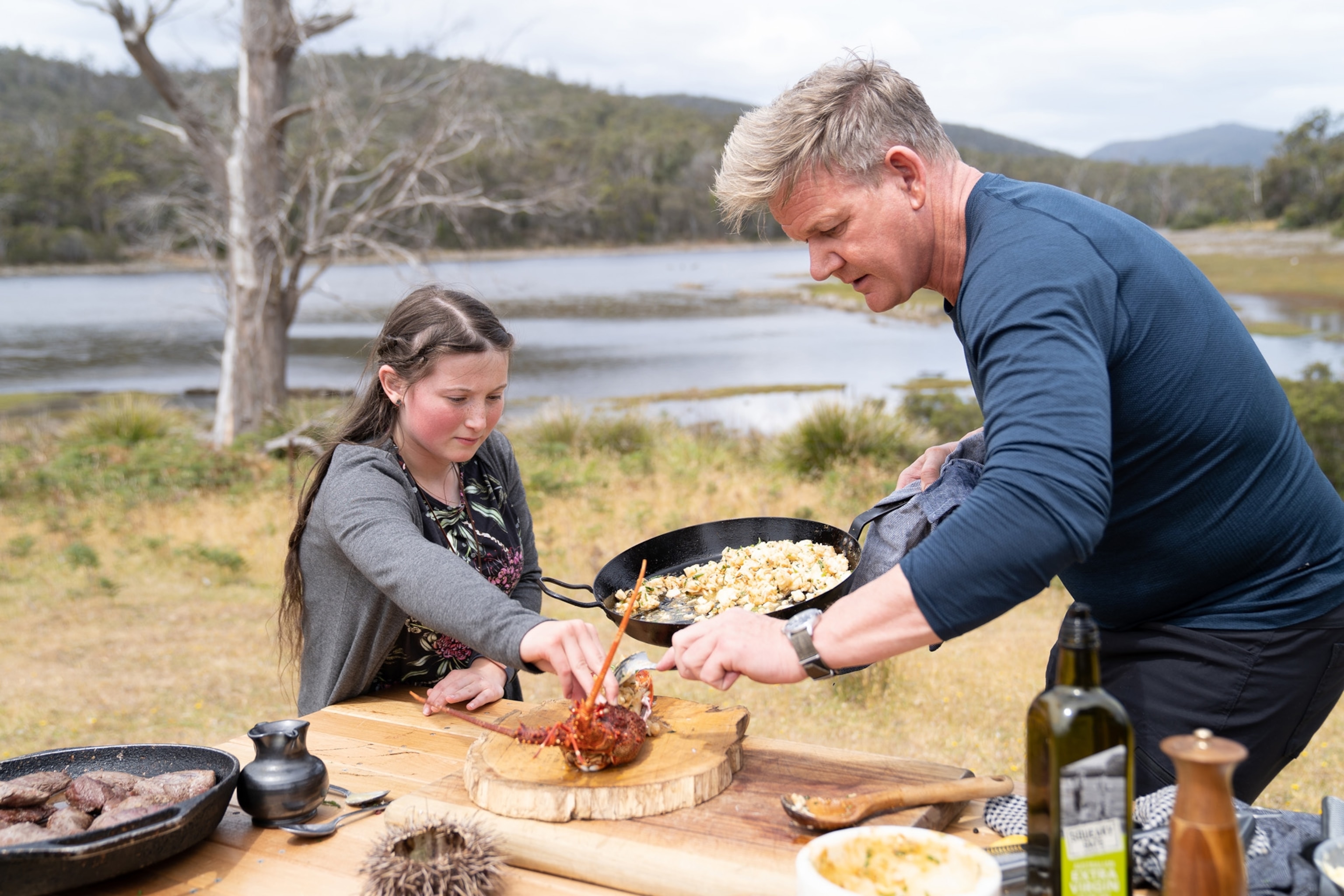Gordon Ramsay Journeys to Remote Tasmania
Australia’s island state’s far-flung flavor makes a big impression on Gordon, who throws himself into its bartering culture.

In the waters off Tasmania’s Cape Frederick Hendrick, Gordon Ramsay is snuba diving (a hybrid of snorkeling and scuba) for rock lobster but his mind is on a much larger marine animal that he’s convinced is lurking just beyond his sight. “I’m trying to keep my air hose from strangling me, praying I don’t run into a Great White,” he says. “I can’t help but think this is the last place in the world I want to run into a shark.” Luckily, the reward of finally catching a cray wins out over any shark distraction. “While I’ve done a lot of diving in my life, I’ve never quite experienced anything as majestic, or more rewarding, as catching a Tassie cray.”
The remote environment in Tasmania— famous for rich soil, pure air, and clean water—is home to some of the freshest ingredients in the world. That wealth has been enjoyed for more than 35,000 years by the indigenous Aboriginal culture, but it’s now becoming more recognized beyond its island shores.
While the cuisine is here is shaped by its quality ingredients, Tasmania’s remoteness has created a need for self-sufficiency. That, coupled with strict import laws that protect the island’s biodiversity, have influenced a strong barter culture among small-scale local producers.
Artisanal, small-batch, and farm-to-table have all become expected marketing terms for many producers and destinations. In Tasmania, with a population reaching a little more than 500,000, these terms accurately describe the way things have always been done. Chef Analiese Gregory, a culinary nomad and forager who has embraced the region’s rich ocean-to-plate lifestyle, has firmly established her roots in the local food culture—bartering and all.
“Since I’ve come to Tassie, I’ve pretty much only been cooking with produce from the island,” Gregory says. “There’s such a bounty of stuff here, so it seems silly to be flying in things from other places when you can just use what’s here.” With options like local leatherwood honey, a creamy, buttery honey that’s produced from the nectar of the endemic leatherwood plant, Tasmanian flavor tastes like the wilderness in which it’s found.
While Tasmania is sometimes eclipsed by mainland Australia for attention, and its remoteness has presented the challenges of isolation and the need for resourcefulness, Tassie’s lack of dense population means that fresh food doesn’t have to travel far from where it’s raised or foraged to where it’s eaten. From urchins and crayfish in the island’s coastal waters to speckled trout in Lake St. Clair (the deepest freshwater lake in Australia); wild wallaby to leatherwood honey; internationally renowned wineries to more than 30 sought-after whiskey distilleries; and foraged ingredients like samphire, native cherries, and pepperberry leaves—there’s no need to look farther than Tasmania’s own resources for the world to recognize its culinary prowess.
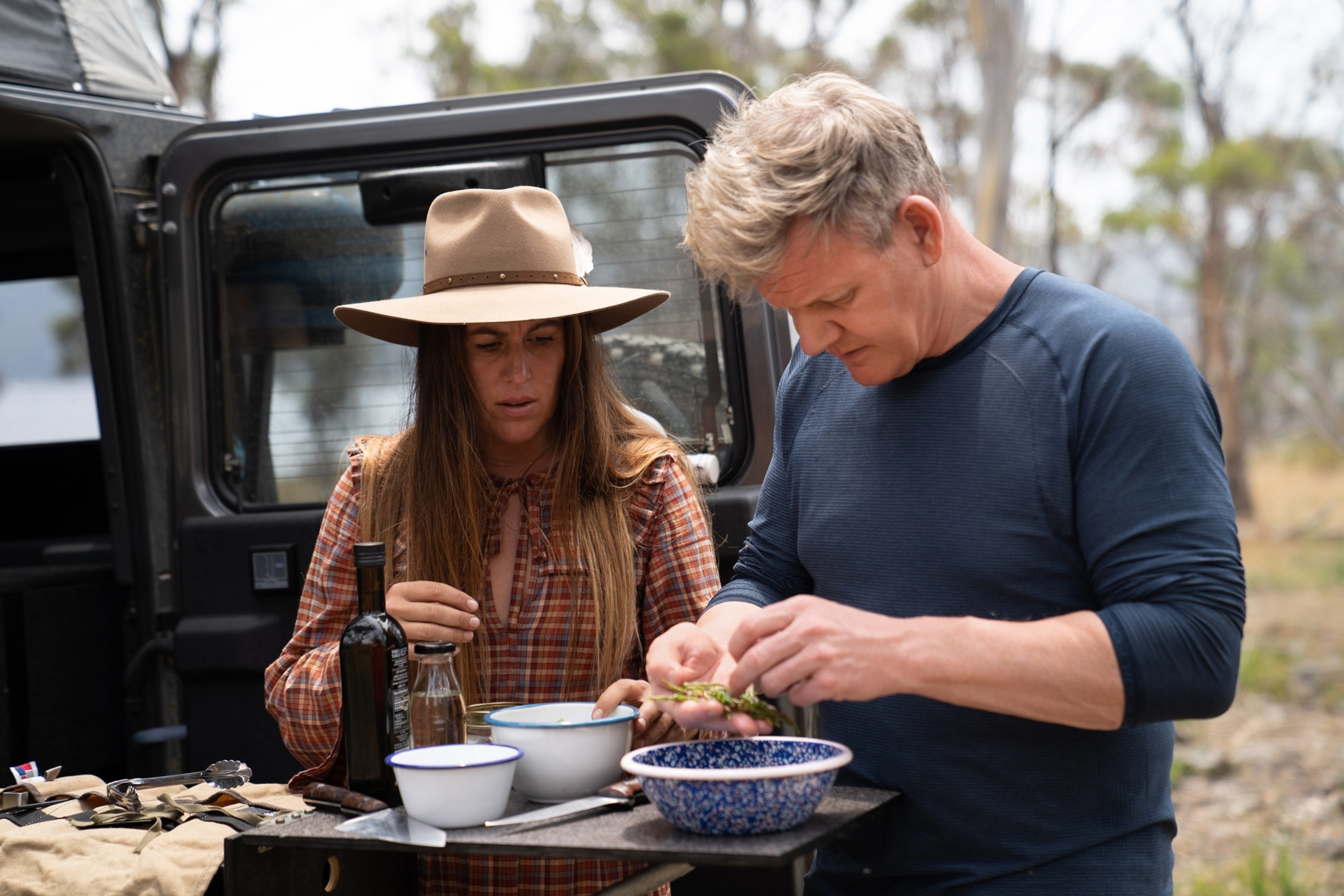
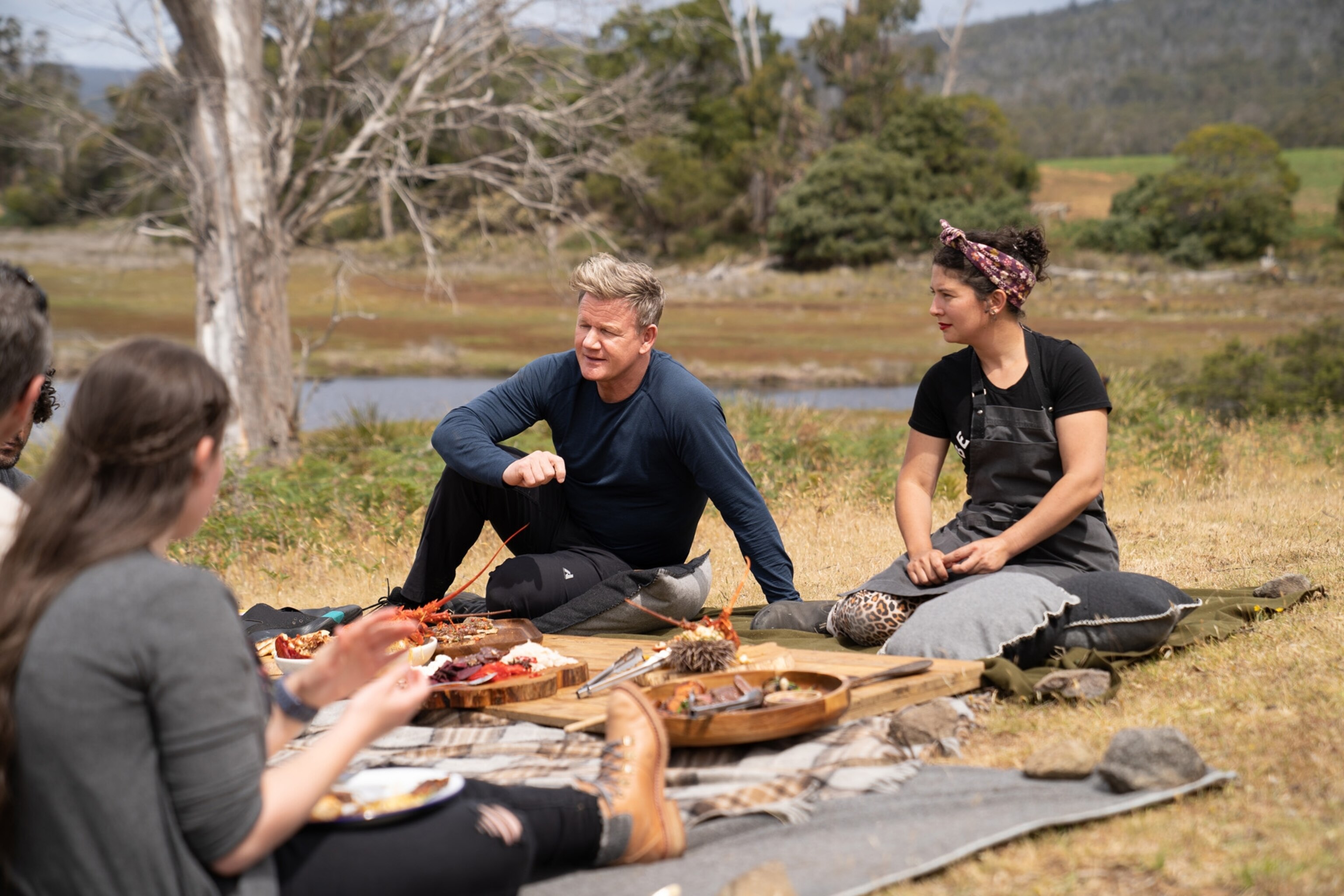
“Tasmania was incredible,” says Ramsay. “The ingredients have been lavish, and everything’s just so majestic in the way that it’s pure and untraveled. But it’s the combination of the food elements and what’s going on lifestyle-wise that makes it shine.”
